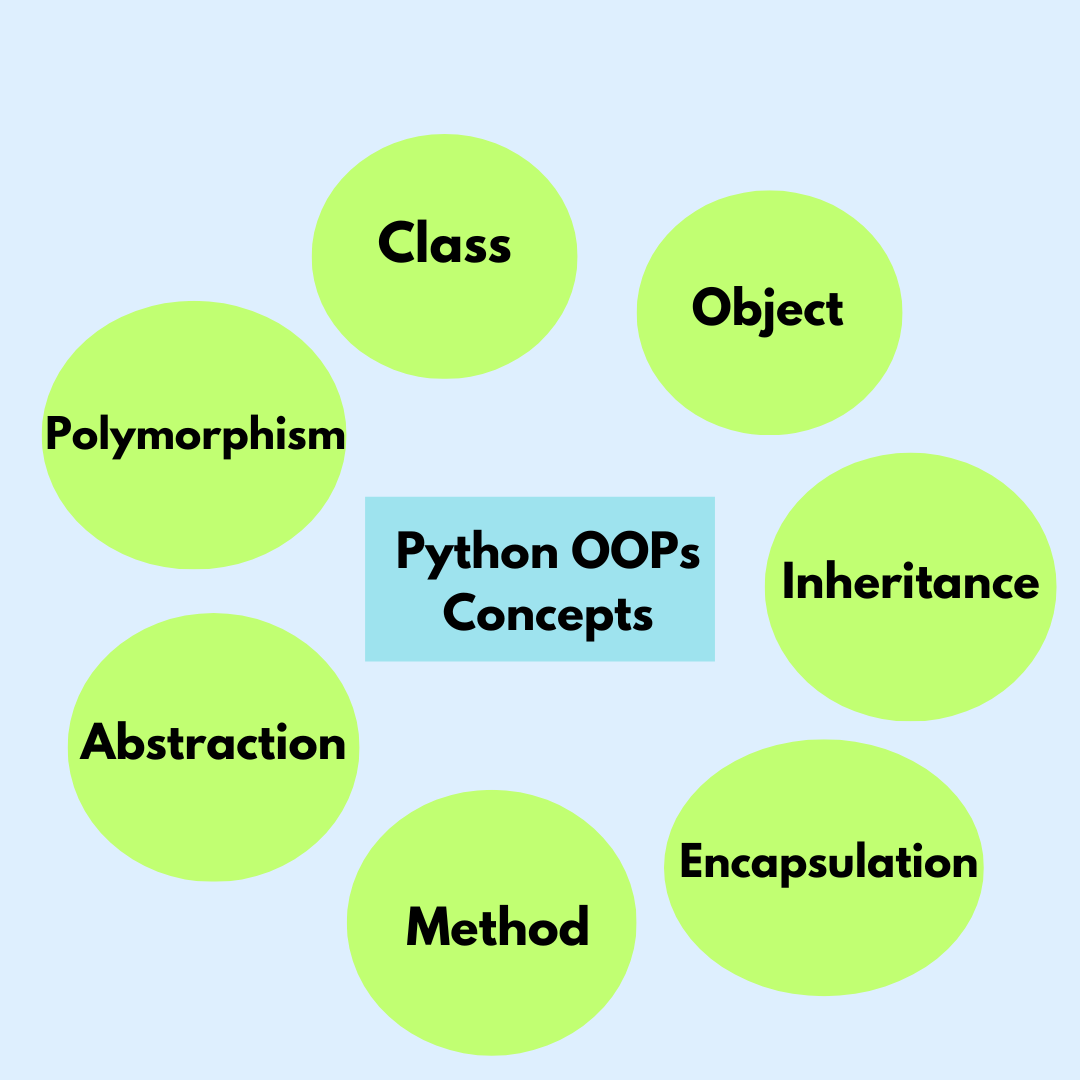Python
Why oops is important in python programming language
Why oops is important in python programming language
It aims to implement real-world entities like inheritance, polymorphisms, encapsulation, etc. in the programming. The main concept of OOPs is to bind the data and the functions that work on that together as a single unit so that no other part of the code can access this data.
Developers often choose to use OOP concepts in Python programs because it makes code more reusable and easier to work with larger programs. OOP programs prevent you from repeating code because a class can be defined once and reused many times.
Programmers can use object-oriented programming software independently and can also easily upgrade OOP packages in the existing software. So, OOP can make software development more modular, reusable, and maintainable, which can make it easier to upgrade and update the system.
Object-Oriented Programming (OOP) is a paradigm that is widely used in software development. Moreover, it uses objects that can represent abstract concepts or real-world objects to represent and manipulate data, including the actions that can be performed. In OOP, a program is made up of a collection of objects that communicate with each other by sending messages.
The following applications get structured around objects using OOP systems.
Client-Server Systems IT infrastructure is made up of object-oriented client-server systems, which are used to make Object-Oriented Client-Server Internet (OCSI) applications.
Object-Oriented Database The object-oriented database stores objects, such as integers and real numbers, instead of storing data. It is also called the Object Database Management System (ODBMS).
Features of Object-Oriented Programming You can gain a better understanding of object-oriented programming by understanding its four fundamental features.
Easily Upgradable Programmers can use object-oriented programming software independently and can also easily upgrade OOP packages in the existing software. So, OOP can make software development more modular, reusable, and maintainable, which can make it easier to upgrade and update the system. Flexible OOP software is flexible to use for programmers. hence, they can pass different objects through the same interface using polymorphism, which implies the ability of a single function or method to operate on multiple data types.
Smooth Interface The user interface of OOP software is smooth and easy to handle. It can provide a consistent interface for users by encapsulating the implementation details and exposing an efficient set of methods and properties.
Modularity The encapsulation method in OOP software helps objects to be self-contained. Also, it facilitates troubleshooting while developing a program. Moreover, the software enables modularity by allowing developers to break down a complex problem into self-contained units to make specific designs.
Advantages of Object-Oriented Programming:
Developers utilize object-oriented programming to build software based on data. Here is a breakdown of its benefits.
- Enables Code Reusability It is no longer necessary for programmers to manually develop the same code multiple times because they can reuse code through OOP inheritance.
- Increases Productivity in Software Development The OOP framework allows programmers to construct programs taking help from existing packages, such as Python, which can save time and boost productivity
- Reinforces Security Programmers filter out limited data using OOP mechanisms, such as data hiding and abstraction, to keep the application secure. This ensures that only important data can be seen by the users.
- Simplifies Code Maintenance The code in object-oriented software is easy to use and maintain. The software simplifies the code maintenance process by promoting modular and reusable designs.
What are the Basics of Object-Oriented Programming?
Constructor
This is a special kind of subroutine that is executed when an object is created. Essentially, it prepares the newly created item for usage and accepts arguments from the object to configure the appropriate member variables.
Composition
In OOP, the composition of child objects and parent objects refers to the relationship between objects of different classes in a hierarchy. A parent object defines a set of properties and behaviours that can be inherited by one or more of the child objects. The latter can further add new ones as well. Since child objects do not have a lifecycle, they vanish with the parent objects and vice versa. That is why both compositions remain dependent on each other.
Coupling The term “coupling” is used to refer to the level to which one software component is related to another component of that software. Classes, packages, components, subsystems, and even entire systems can be considered software elements. It denotes the level of familiarity one object or class has with another.
Principles of Object-Oriented Programming:

The four main principles that define the object-oriented programming language are inheritance, polymorphism, data abstraction, and encapsulation. These are also known as the four pillars of software programming.
1. Inheritance
Child classes inherit data and behaviours from the parent class. They can be created, which will extend the functionality of the parent class and add additional attributes and behaviours to it. Basic attributes and behaviours can be defined in a parent class, which allows the creation of child classes.
2. Abstraction
Abstraction is an extension of encapsulation. Also, it hides the internal information of a program from its users by using classes and objects, which hold data and code. In addition, it helps protect sensitive information that is stored in the source code.
3. Encapsulation
Encapsulation refers to keeping all relevant information inside an object and letting only a small portion remain visible to the outside environment. The code inside the class template defines the attributes and behaviours. Encapsulation conceals the internal data of objects, as well as the internal software code implementation within a class.
4. Polymorphism
Polymorphism is of two types—static and dynamic. Static polymorphism is accomplished by utilizing method overloading, and dynamic polymorphism is accomplished by utilizing method overriding. In the first case, a child class can have a different implementation than its parent class. In the second case, two different methods can have the same name but the number of parameters that are passed into the method call may differ.
Building Blocks of Object-Oriented Programming:
Methods The behaviours are represented by methods called actions that can either return information about an object or edit the data associated with it. Also, the code for the method is included in the definition of the class.
Classes Classes represent user-defined data types obtained from the existing data type. The blueprint for the structure of methods and attributes is created in classes and made into individual objects. Classes provide methods for behavior and fields for attributes.
Attribute When objects are created, the data for each object is stored in the attributes field. In other words, the stored information is called an attribute.
Objects An object is a discrete entity that represents an abstraction with an instance of a class. It maintains its information in attributes and uses methods to hide its activities.

